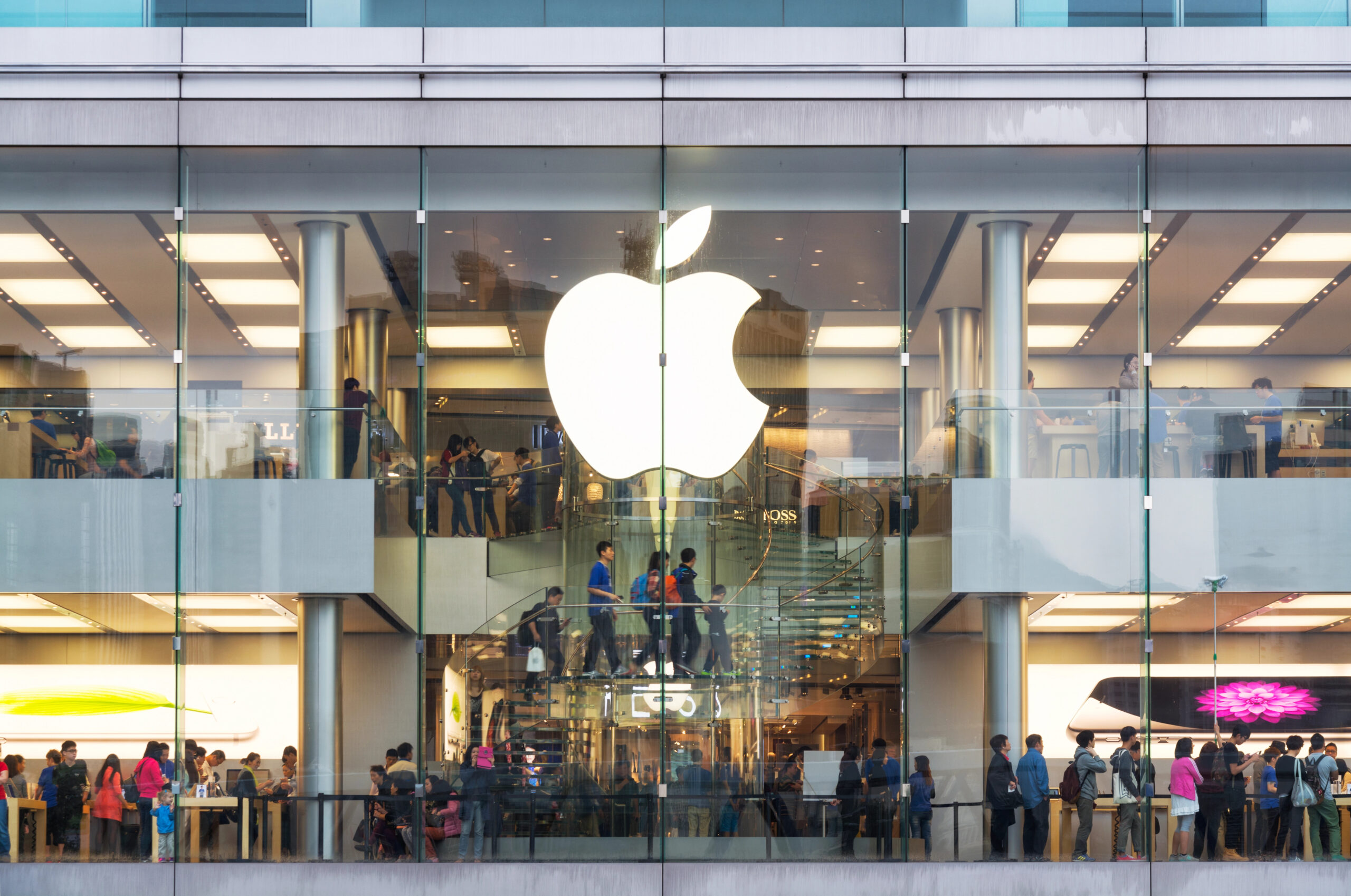As you navigate the ever-evolving landscape of consumer technology, Apple’s latest strategic shift demands your attention. Apple is pivoting away from budget-friendly options, instead doubling down on premium devices that showcase cutting-edge innovation. This move will reshape your choices in the smartphone and laptop markets, potentially altering your relationship with the Apple ecosystem. By phasing out more affordable models and introducing advanced replacements, Apple is redefining what it means to be a premium brand in the digital age. Understanding these changes is crucial as you consider your next tech purchase and how it fits into your digital lifestyle.
Apple’s Strategic Shift Towards Premium Devices

Streamlining the Product Lineup in Apple Premium Devices
Apple’s decision to phase out budget-friendly iPhone models marks a significant pivot in its product strategy. By discontinuing the iPhone SE and iPhone 14, the tech giant is clearly signaling its intention to focus on higher-end devices. This move aligns with Apple’s long-standing reputation for premium products and could potentially strengthen its position in the luxury tech market.
The iPhone 16e: A New Mid-Range Contender
Introducing the iPhone 16e at $599, Apple is not completely abandoning the mid-range market. This new model serves as a bridge between budget and premium offerings, boasting impressive features like the A18 chip and Apple Intelligence support. The inclusion of an in-house C1 modem and USB-C port demonstrates Apple’s commitment to innovation and compliance with regulatory standards.
Implications for Consumers and the Market as Apple Focus on Premium Devices
This strategic shift may have far-reaching effects on both consumers and the broader smartphone market. While some budget-conscious customers might feel left behind, others may be enticed by the enhanced capabilities of the iPhone 16e. Additionally, this move could potentially influence other manufacturers to reconsider their product lineups, possibly leading to industry-wide changes in smartphone pricing and feature sets.
The Discontinuation of Budget iPhone Models
Apple’s decision to phase out its budget-friendly iPhone models marks a significant shift in the company’s product strategy. This move aligns with Apple’s broader vision of focusing on premium devices and streamlining its product lineup.
Farewell to Affordable Options
The discontinuation of the iPhone SE and iPhone 14 signals the end of an era for budget-conscious Apple enthusiasts. These models have long served as entry points into the Apple ecosystem, offering a taste of iOS at a more accessible price point. However, as Apple pivots towards higher-end offerings, these budget options are being retired.
The iPhone 16e: A New Mid-Range Contender
In place of the discontinued models, Apple introduced the iPhone 16e, priced at $599. This device serves as a bridge between the budget and premium segments, offering significant upgrades over its predecessors. With features like the A18 chip, Apple Intelligence support, and an in-house C1 modem, the 16e provides a more robust experience at a mid-range price point.
Strategic Alignment and Regulatory Compliance in Apple Premium Devices
This product shift not only aligns with Apple’s premium-focused strategy but also addresses regulatory requirements. The inclusion of a USB-C port in the iPhone 16e, for instance, complies with the European Union’s mandate for standardized charging ports. This move demonstrates Apple’s ability to adapt to changing market conditions while maintaining its focus on innovation and user experience.
Introducing the iPhone 16e: A Compelling Mid-Range Option
The iPhone 16e emerges as Apple’s strategic response to the evolving smartphone market, offering a blend of premium features at a more accessible price point. Priced at $599, this device bridges the gap between budget-friendly options and high-end models, appealing to consumers seeking advanced technology without breaking the bank.
Cutting-Edge Technology
At the heart of the iPhone 16e lies the powerful A18 chip, ensuring smooth performance and efficient energy management. This advanced processor enables the device to handle demanding tasks with ease, from multitasking to running graphics-intensive applications. Additionally, the inclusion of Apple Intelligence support enhances the user experience, offering smarter interactions and more intuitive functionality.
Connectivity and Compatibility
The iPhone 16e introduces two significant upgrades in connectivity. First, the incorporation of Apple’s in-house C1 modem promises improved cellular performance and potentially better battery life. Second, the shift to a USB-C port aligns with global standards, offering greater compatibility and faster data transfer speeds. This change not only complies with EU regulations but also simplifies the charging ecosystem for users worldwide.
A Balance of Features and Value
While positioned as a mid-range option, the iPhone 16e doesn’t skimp on essential features. You’ll find a capable camera system, robust build quality, and access to Apple’s renowned ecosystem of apps and services. This device represents Apple’s commitment to delivering premium experiences across its entire product line, ensuring that even budget-conscious consumers can enjoy the benefits of cutting-edge technology.
The Upcoming M4 MacBook Air: Balancing Power and Portability
As Apple continues to innovate its product lineup, the forthcoming M4 MacBook Air models are poised to redefine the balance between power and portability in early 2025. These new iterations will complete the transition of the MacBook line to the advanced M4 chips, following recent upgrades across other Mac products.
Design Continuity and Enhanced Performance
The M4 MacBook Air will maintain the sleek design language of its M2 predecessor, ensuring familiarity for existing users while packing a significant performance boost under the hood. You can expect improved processing capabilities and enhanced energy efficiency, thanks to the cutting-edge M4 chip architecture.
Catering to Diverse User Needs
Whether you’re a student managing multiple assignments or a professional juggling complex tasks, the M4 MacBook Air aims to meet your computing needs. The anticipated performance improvements will likely translate to smoother multitasking, faster rendering times, and more responsive applications across the board.
Apple Premium Devices: Ecosystem Integration and Future-Proofing
By aligning the MacBook Air with Apple’s latest chip technology, you’ll benefit from seamless integration within the broader Apple ecosystem. This update ensures compatibility with the latest software developments and positions the MacBook Air as a future-proof investment for years to come.
As Apple refines its product strategy, the M4 MacBook Air represents a significant step in delivering premium experiences across all price points, reinforcing the company’s commitment to innovation and user satisfaction.
Apple’s Ecosystem Optimization: Streamlining the Product Lineup in Premium Devices
Consolidating for Coherence
Apple’s recent move to discontinue budget-friendly iPhone models marks a significant shift in its product strategy. By phasing out the iPhone SE and iPhone 14, the tech giant is refining its offerings to focus on premium devices. This consolidation aims to create a more cohesive ecosystem, where each product seamlessly integrates with others in the lineup.
The New Middle Ground: iPhone 16e
Replacing the budget options, the iPhone 16e emerges as a bridge between affordability and advanced features. Priced at $599, it incorporates cutting-edge technology like the A18 chip and Apple Intelligence support. This strategic positioning allows Apple to maintain a presence in the mid-range market while elevating the overall user experience.
Aligning with Regulatory Requirements for Apple Premium Devices
Apple’s product streamlining also addresses regulatory challenges, particularly the European Union’s mandate for USB-C charging ports. By incorporating USB-C into the iPhone 16e and future models, Apple ensures compliance while standardizing connectivity across its device range. This move simplifies the user experience and potentially reduces electronic waste.
Future-Proofing the Mac Lineup
The upcoming transition to M4 chips in MacBook Air models further exemplifies Apple’s commitment to ecosystem optimization. By unifying the chip architecture across its computer line, Apple enhances performance consistency and software compatibility. This strategy not only simplifies development but also provides users with a more unified experience across different Apple devices.
All in All
As you consider your next device purchase, keep in mind Apple’s strategic shift towards premium offerings. The discontinuation of budget models and the introduction of the iPhone 16e reflect the company’s commitment to advancing technology and user experience. With the upcoming M4 MacBook Air, Apple continues to push the boundaries of performance and efficiency. These changes may impact your options, but they also promise enhanced features and capabilities. Stay informed about these developments to make the best decision for your needs. Apple’s focus on premium devices signals a new era in consumer electronics, one that prioritizes cutting-edge technology and seamless integration across its ecosystem.
More Stories
Barbie Embraces AI as Mattel and OpenAI Reimagine Smart Play
n the ever-evolving world of play, Mattel begins a groundbreaking journey by teaming up with OpenAI. This partnership brings artificial intelligence to the iconic Barbie brand. By the end of 2024, Barbie’s first AI-powered toy may debut.
Android Instant Apps Retired After Years of Low Adoption
Google decides to retire Android Instant Apps by December 2025 as they struggled to capture user interest since its launch in 2017.
OpenAI Cracks Down on State Sponsored Abuse of ChatGPT
OpenAI has taken a decisive step to thwart state-sponsored exploitation of its ChatGPT technology. As detailed in a comprehensive threat intelligence report, OpenAI has disabled numerous accounts implicated in cyber operations orchestrated by state actors from countries including Russia, China, and North Korea.
Record‑Breaking Rupiah Loan Powers AI‑Ready Batam Data Hub
They secured a historic record-breaking Rupiah 6.7 trillion loan from financial giants DBS and UOB. This monumental financing supports an AI-ready data center campus at Batam’s Nongsa Digital Park.
Threads Unveils Native DM Test to Break Instagram Dependency
By unveiling a native DM (direct messaging) feature, Threads aims to sever its dependency on Instagram for private communications, a shift poised to redefine how users interact within the platform.
Google Closes Loophole That Let Hackers Bruteforce Your Hidden Phone Number
Recently, Google took decisive action to close a significant vulnerability that could potentially expose users’ hidden phone numbers to malicious actors.


